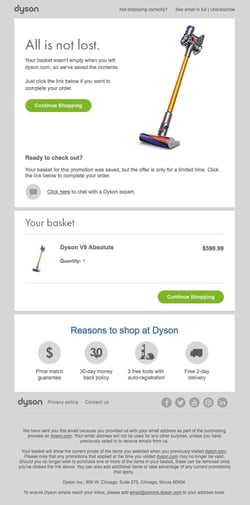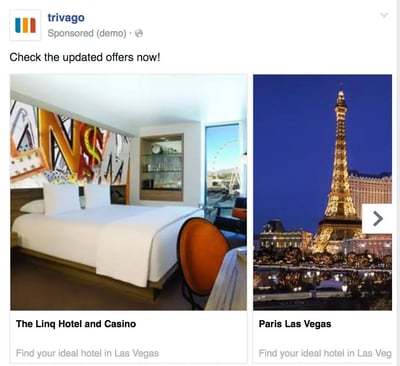In the business world, there are many forms of marketing that companies can implement to encourage customers to buy. Behavioral marketing is one robust method of gathering data to segment and target audiences.


Behavioral marketing can also help prevent consumers from being inundated with unwanted or unrelated ads. With this type of marketing, businesses focus on individual patterns of engagement to identify their customers’ specific needs.
In this post, you’ll learn what behavioral marketing is, its benefits, and examples of how businesses today are utilizing the strategy today.
Table of Contents
What is behavioral marketing?
Behavioral marketing is the method by which companies target audiences based on their behavior, interests, intentions, geolocation and other metrics.
This data is gathered through web analytics, cookies, search history, and other insights.
By finely segmenting audiences based on specific behaviors or user profiles, organizations can provide relevant content and offers rather than sending general messages.
Types of Behavioral Marketing
When it comes to behavioral marketing, there are many strategies that a company can implement.
While some tactics are effective, many can be combined to create a robust behavioral marketing plan. Let’s look at a few of the most popular types of tactics.
Product Suggestions

ImageSource
Everyone has seen it happen when shopping online: You go to check out, and a window pops up showing items that are bought often with what’s in your cart. This suggested selling technique is an excellent way to engage potential customers in cross-selling or up-selling opportunities.
And, this tactic is incredibly effective. Cross-selling and category-penetration techniques like product suggestions can increase sales by 20% and profits by 30%, according to McKinsey & Company.
Product suggestions fall into behavioral marketing because an action (putting something into a cart) leads to targeted selling suggestions.
Remarketing

ImageSource
For companies that utilize Google and Facebook for their marketing efforts, remarketing and retargeting strategies could be a unique approach to driving sales.
Remarketing strategies focus on taking pages or products a customer has viewed and showing them again once the potential buyer has left the website. This additional opportunity for consumers to view your products again could help drive traffic to your website or convert product sales.
Let’s say you visit the Asian Art Museum’s website to plan for your next San Francisco trip.
A few minutes later, you see an ad for the museum when you’re scrolling on Facebook. The ad you receive on Facebook is based on a past behavior (visiting a website). That’s remarketing in action.
Email Marketing

ImageSource
Many organizations currently utilize email marketing as part of their marketing strategy, but few take advantage of the power of behavioral segmentation. One prime example of a behavioral segmentation email marketing strategy is abandoned cart emails.
By targeting customers who have items currently sitting in their cart for an extended period, your team can send content and emails specific to those products or categories.
Ultimately, this creates a more personalized experience for the consumer.
Demographic Targeting
Of all the behavioral marketing tactics, demographic targeting is one of the most widely used throughout the business world. Ultimately, organizations make use of criteria such as age, geographical location, education level, and even gender to create an image of a user.
Companies are even starting to look at other criteria, such as the website you visit, to help build a better vision of the type of product you might be interested in.
Marketing Automation
Data is precious to marketers, and as companies build out massive information caches, they can get better at generating and serving relevant content to consumers.
With marketing automation and machine learning technology, businesses can leverage their databases to forecast consumer behavior even months in advance.
However, data collection is a complicated and nuanced issue, and online privacy is becoming increasingly important as audience listening tools become more advanced.
Behavioral Marketing Segmentation
An important facet of the behavioral marketing method is thinly segmenting audiences. Behavioral segmentation might be determined differently depending on your organization’s marketing goals and ideal market.
However, there are several common ways that companies split up markets, including:
- Purchase behavior
- Customer loyalty
- Benefits sought
- Customer journey stage
- Engagement level
- occasion
- usage
Behavioral Marketing Examples
- Whiskey Loot
- Dyson
- Nike
- Trivago
- Amazons
1. Liquor Loot

Effective segmented email marketing isn’t always serious. Just take a look at this abandoned cart email from Liquor Loot. The email has a joking tone as it lists the benefits of buying a bottle of whiskey.
In fact, by providing fun and playful reasons why a potential customer should consider signing up for the Whiskey Loot Box, they are likely to get engagement from those who were on the website but didn’t complete the purchase.
2. Dyson

Known for its incredible lineup of vacuums and sweepers, Dyson has done a great job of utilizing behavioral marketing. In the image above, you can see an example of one of their abandoned cart emails.
By providing a recap of the items that a shopper was thinking about buying and making it easy for them to return to the purchase screen, Dyson can recapture lost sales before they are gone for good.
3.Nike

Nike has long been seen as a leader in the marketing space. Most people know of the company’s creative use of advertising campaigns featuring athletes to inspire millions of kids and adults to get up and be active.
However, Nike has also built out an incredible digital marketing strategy.
The remarketing ad featured above seems simple but can be a powerful tool to drive potential buyers shopping for shoes back to the Nike website.
4. Trivago

In today’s day and age, it’s common for consumers to visit a company’s website multiple times before deciding to purchase. This trend is especially true for businesses that focus on travel and transportation — which is why remarketing ads are essential.
Many people visit Trivago’s website to look up vacation destinations, but most people don’t often purchase the first time they look at a location.
So to ensure that the company stays top of mind, Trivago utilizes remarketing ads on Facebook and Google to showcase new updated offers for hotels in location spots a customer was previously searching for.
5. Amazons

ImageSource
Amazon has cornered the market on effective suggestive advertising. Throughout its website, you’ll see advertisements and sections that recommend products based on items you’ve purchased in the past, looked at, or have sat in your cart.
You can also see what past buyers have purchased as a complement to the item in your cart.
By creating this level of personalization, Amazon has converted people from buying one item to doing most of their shopping through the online retailer.
Behavioral Marketing Stats
Looking for more proof of the power of behavioral marketing? These statistics demonstrate the growing popularity and benefits of behavioral marketing.
-
- Organizations that leverage consumer behavior data to generate insights outperform their competitors by 85% in sales growthaccording to Microsoft.
-
- 92% of consumers agree it is important that every interaction they have with a brand is excellent, whenever or wherever they happen in the decision to purchase from a brand or retailer.
-
- 49% of customers say they will likely become repeat buyers after a personalized shopping experience with a retail brand, according to Segment’s 2022 State of Personalization report.
- Segment also reports 47% of companies personalize communication based on real-time behavior.

ImageSource
-
- Companies that grow faster drive 40% more of their revenue from personalization than their counterparts, according to 2021 research from McKinsey & Company.
Implementing Behavioral Marketing
Your customers expect a personalized experience. Behavioral marketing is one way you can get there. As you start your journey, remember the importance of transparency.
Customers should know what data is being collected and what your brand is using it for. With these considerations in mind, you’ll be well on your way to building an effective behavioral marketing strategy.
Editor’s Note: This post was originally published in Aug. 2019 and has been updated for comprehensiveness.
